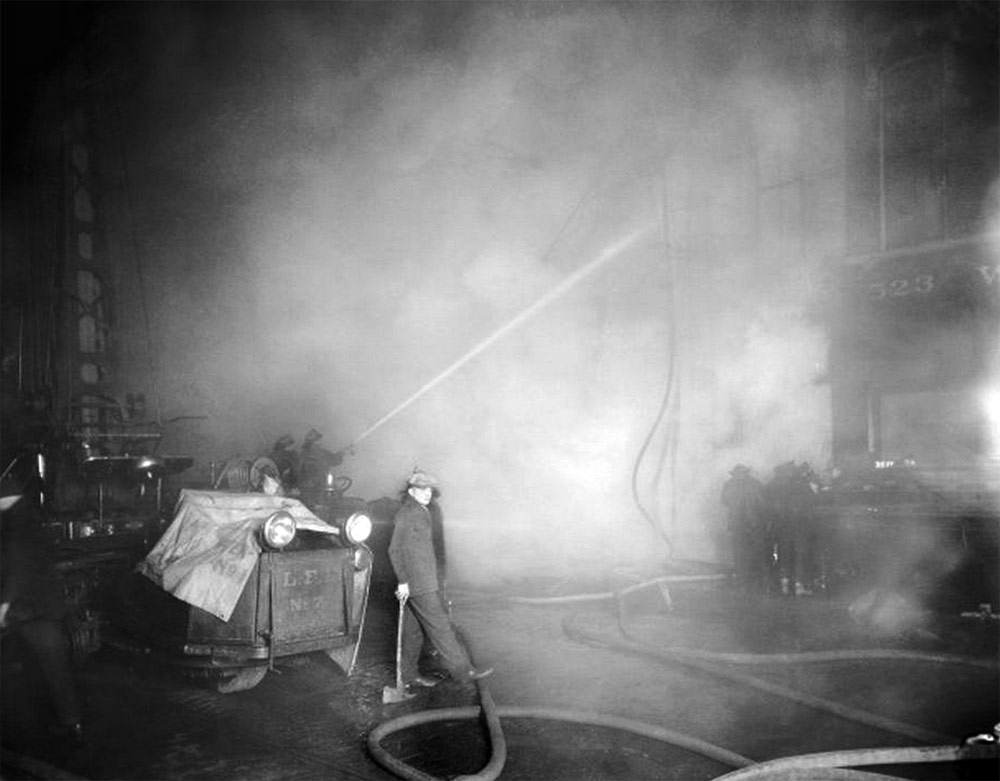We hear about fires around Louisville pretty often on the local television news (or sometimes right here on Broken Sidewalk), but it’s usually a passing reference without any follow-up about what happened or how the story played out. These stories, collectively, do have an important impact on the city, affecting people’s lives and the shape of the urban environment.
There are many factors that contribute to a city’s arson rate, from how many abandoned buildings a city has to rate of mental illness. One thing is clear, though, that arson has no geographic bounds, and intentional fires happen all across the city, from its core to the far-reaching suburbs.
Tamara Evans at WDRB spoke with the 10-person-strong Louisville Metro Arson Squad recently, which investigates “about 300 set fires a year”—with cases happening more often in the summer. The squad investigates far more fires than actually turn out to be arson. In 2014, for instance, the squad was “called out on 620 runs.” According to WDRB:
Major Henry Ott has been with the department nearly 35 years. He says the Louisville Metro Arson Squad has been busy lately with apartment and house fires. They’ve been called to three separate fires in the past 24 hours. In January, Major Ott says they investigated 22 intentionally set fires. “We’ve made arrests on three of those. We have two or three others that we plan to make an arrest on ,” said Major Henry Ott.
The good news is that Louisville is good as solving these arson cases. “We have a clearance rate of somewhere around 35 percent. The national average for cities our size is 17,” Major Ott told WDRB.

We crunched our own numbers—or at least what was easily searchable on the internet, mostly from FBI figures—and charted how Louisville ranked in 2010 compared to its peer cities. I looks like Louisville’s numbers are high but in line with a lot of cities of similar size. According to FBI figures, Louisville had 223 arsons in 2010. According to Metro Louisville, in 2013, the squad investigated 571 incidents, of which 267 were considered arson. That year 98 arrests were made.
What do you think can be done to combat arson in the community? How has arson affected you? Share your thoughts in the comments below.
[Top image: Courtesy UL Photographic Archives – Reference.]



Arson used to be the method of choice when you wanted to off a historic building or get the insurance money for your marginal rental. Still is on occasion. Abandoned structures (look at Detroit) = fun for folks who play with fire. Lived adjacent to the long abandoned Dance Council Building at Brook and Oak for two decades. Finally someone lit her up for a two alarm extravaganza and the roof collapsed into the basement. I recall my boss calling me advising me to go home because all of the surrounding houses were at risk due to wind.
I ran three blocks and right into the then head of housing, who gleefully confided that now the city could finally tear the building down. Damn preservation anyway.
Luckily after many more months the former Manly High Shop Building ca 1892 was renovated into ten apartments on Toonerville Park. The burnt smell stayed with my house and me for many months .
This was an early project that renovated a building at the juncture of two alleys at zero setback, about six feet from my property line. Very urban and very creative – borne of arson and benign neglect.